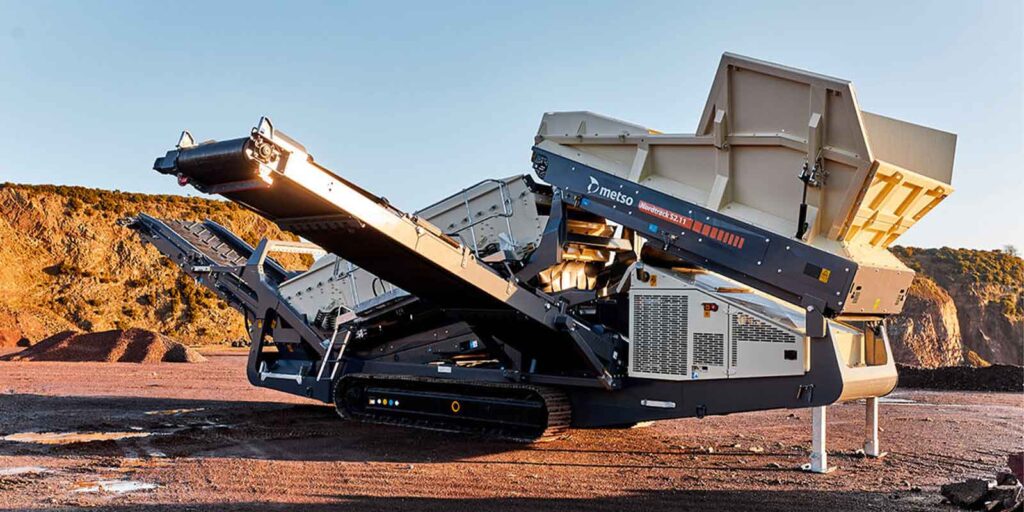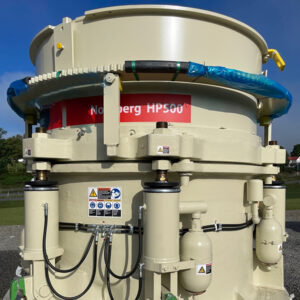Rock crushers are necessary tools for most commercial and industrial projects involving the reduction of large rocks into smaller, more manageable pieces. Rock crushers come in many shapes and sizes, from smaller and more mobile ones to more complex industrial sizes, which can crush tons of rock and ore in one day. Knowing what type of rock crusher to use for your project is essential in order to complete projects with maximum efficiency and minimal risk.
Understanding the Different Stages of Rock Crushing
Rock crushing is an important part of mining and other industrial operations, and they provide critical resources for construction projects of all kinds. Crushing helps to reduce the size of mined material, making it easier to process and transport. Rock crushers come in three main types: primary, secondary, and tertiary crushers.
-
Primary Rock Crushing
Primary rock crushers are typically used for the initial stage of crushing large rocks and objects into more manageable sizes. They are often used in heavy mining operations, where large rocks need to be reduced to smaller sizes quickly and efficiently.
Primary rock crushers include heavy-duty machinery such as jaw crushers, gyratory crushers, impact crushers, and cone crushers. Jaw crushers use a compressive force to break up larger rocks into smaller pieces while gyratory crushes employ a circulatory motion to generate enough force to fragment larger objects into smaller pieces. Impact crushers use a hammer-like blow or impact force to break up materials but cone crushers compress a rotating cone against another surface in order to pulverize the material inside them.
-
Secondary Rock Crushing
Secondary rock crushers usually work after primary rock crushing has already been done, further reducing particle size into sand-sized particles. Secondary rock crushers can include roll crushers (which use friction between two rollers that spin in opposite directions), hammer mills (which use hammers that rotate at high speed), or vertical shaft impactors (which use the centrifugal force generated by spinning hammers).
-
Tertiary Rock Crushing
Tertiary rock crushing is the last stage of the crushing process, where the crushed material from the secondary crusher is further reduced in size by a tertiary crusher to produce a product with a desired size and shape.
Tertiary rock crushers include roller crushers, cone crushers, impactors, hammer mills, autogenous or semi-autogenous grinders, and other specialty machines.
How to Choose the Right Rock Crusher
The type of rock crusher you select will depend on several factors that include:
- The type of material being crushed
- What size material needs to be produced
- How much power is available for this operation
- Your budget constraints
- The purpose of using the rock crusher itself
For instance, if you’re looking for a rock crusher designed specifically for heavy mining operations, then primary rock crushing machines such as jaw or gyratory-style rock crushers might be best suited for you; whereas, if you’re planning on producing sand-sized particles, then a secondary rock crusher like a hammer mill or vertical shaft impactor might be more appropriate for your purposes.
Similarly, if you’re looking for a rock crusher with high power output, then impact crushing machines such as cone crushers could be more suitable for your needs; but if you’re needing something more economical, then roll crushing machines may be better suited to your budget constraints.
Using different types of rock crushers can be crucial when it comes to getting the job done efficiently as each type has its own advantages depending on your project’s requirements. For example, if you’re looking for finesse over strength, then using an impactor could be beneficial since it produces multiple small pieces at once compared to something like standard cones which result in more uniform products but may not necessarily generate as much finesse as you need for your application.
Additionally, if your project requires maximum strength, then using something like hammer mills could help you achieve this goal since they’re designed specifically for breaking down tough materials quickly and effectively. Ultimately, choosing the rock crusher that is best for your project will depend heavily on what kind of output you need and your unique project demands, so carefully consider all of these aspects before making your final decision.
Finding the Perfect Rock Crusher for Your Project’s Unique Needs
When correctly implemented, rock crushers can help reduce processing times significantly while also producing less dust and waste products compared to traditional methods like blasting or drilling. Production costs will also typically be much lower when using rock crushers than when using alternative methods due to their ability to quickly process large amounts of material without requiring significant labor costs associated with mining techniques like traditional drilling and blasting processes.
Choosing the proper type of rock crusher is essential for ensuring optimal performance during any type of large-scale production process involving all sorts of different types of materials. With so many different types available, it’s important for businesses to research all potential options before investing in one model over another as this will ultimately determine how efficient their operations will be. To learn more about how to find the perfect machinery for your unique project needs and budget, reach out to the Mellott team of experts today at 855-554-1606.


